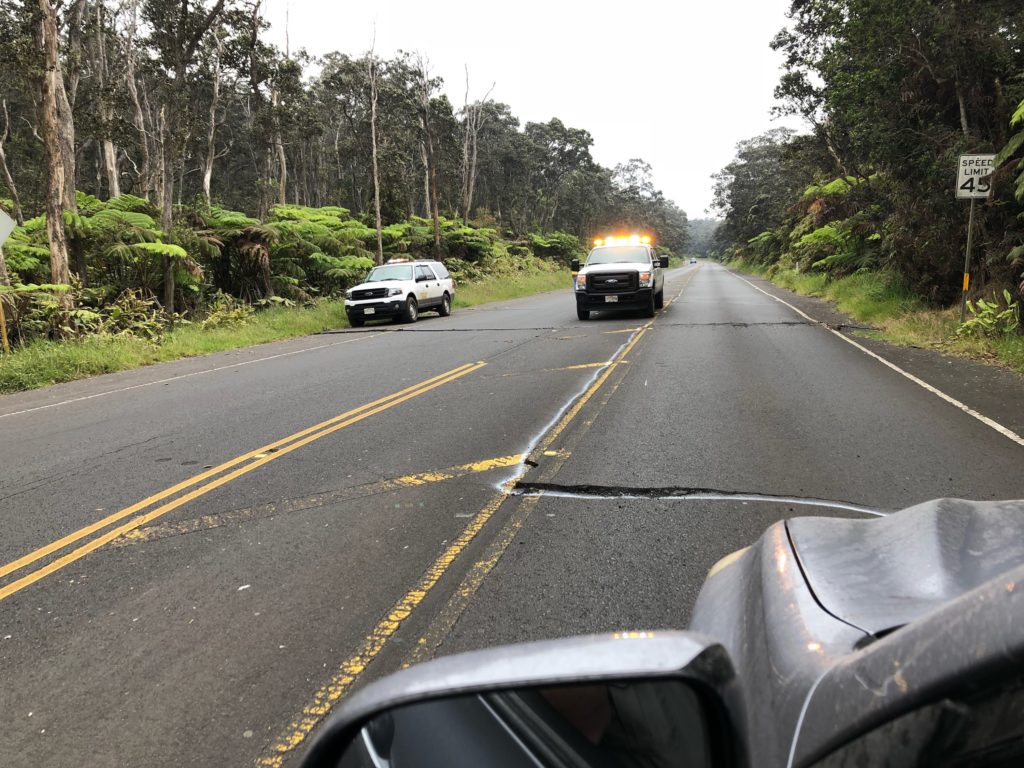Earthquake Causes Road Cracks and Structural Damage in HVNP
Hawai‘i Volcanoes National Park reports that a magnitude-3.5 earthquake located 0.1 miles beneath the summit of Kīlauea Volcano around 11:30 a.m. Wednesday, May 16, 2018, caused noticeable structural damage in park buildings, and left behind a web of earth cracks and uneven road surfaces on Highway 11 and other park roadways.
No injuries were reported.
Park emergency managers urge motorists to slow down and use caution on Highway 11, particularly between mile markers 28 and 29, and Pi‘i Mauna Road, where most damage occurred. The park, which has jurisdiction of Highway 11 between mile markers 28 and 38.5, is not closing Highway 11 at this time.
In addition, motorists are reminded that stopping for non-emergency purposes along the side and shoulders of Highway 11 in the park is prohibited.
“We are leaving Highway 11 open at this time, but will close it if it becomes unsafe for motorists,” said Chief Ranger John Broward. “We suspect we’ll find additional damage throughout the park once we have time to assess damage,” he said.
The earthquake also created sizable cracks and floor shifting in the park’s Visitor Emergency Operations Center and caused a temporary loss of power and ruptured several water lines.
Most of Hawai‘i Volcanoes National Park has been closed since Friday, May 11 due to ongoing seismic activity, summit deflation, and a possible steam explosion at the summit of Kīlauea Volcano.
Yesterday, consistent large rock falls into Halema‘uma‘u Crater created the tallest and largest series of ash plumes yet observed since the change in volcanic activity began. This morning, USGS scientists found rocks two feet across in the parking lot a few hundred yards from Halema‘uma‘u. According to USGS, yesterday’s series of summit events reflect the most energetic explosions yet observed and could reflect the onset of steam-driven explosive activity.














